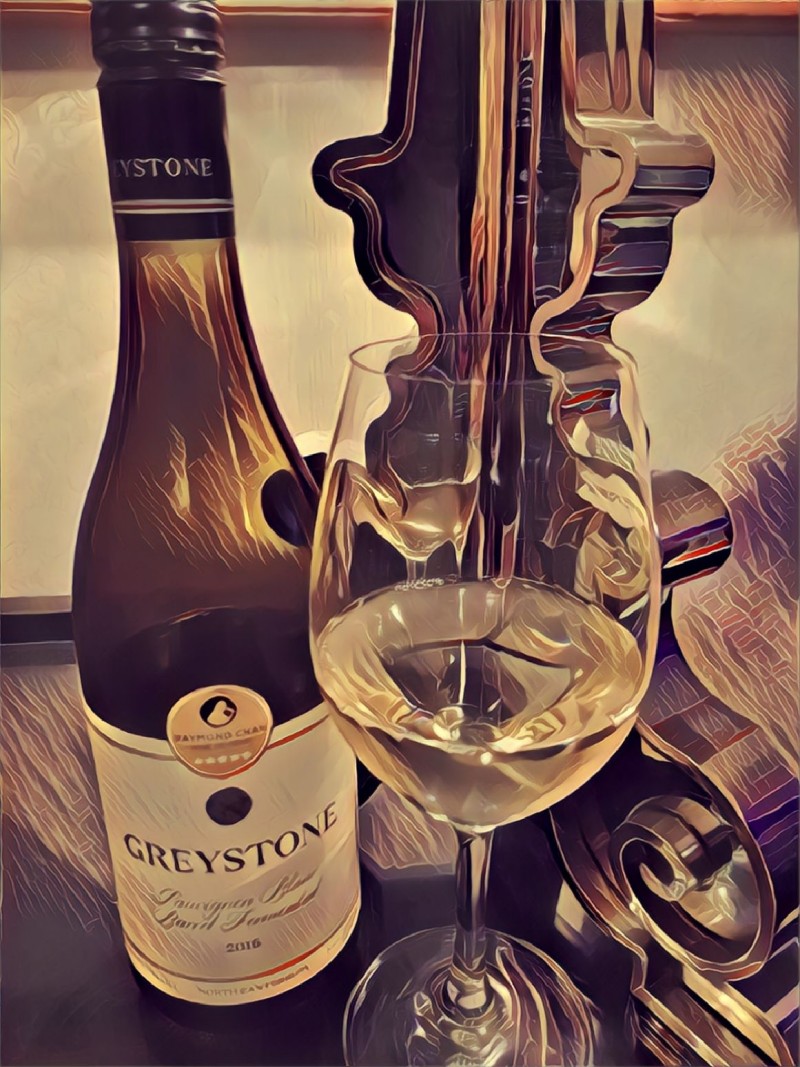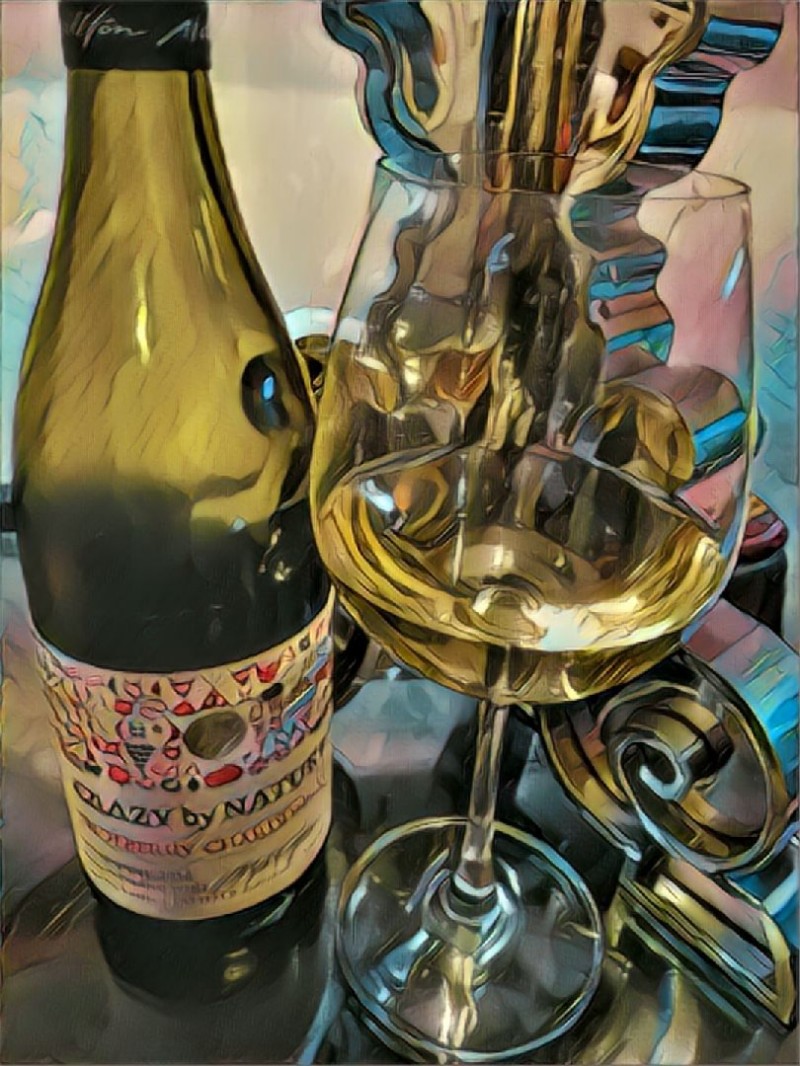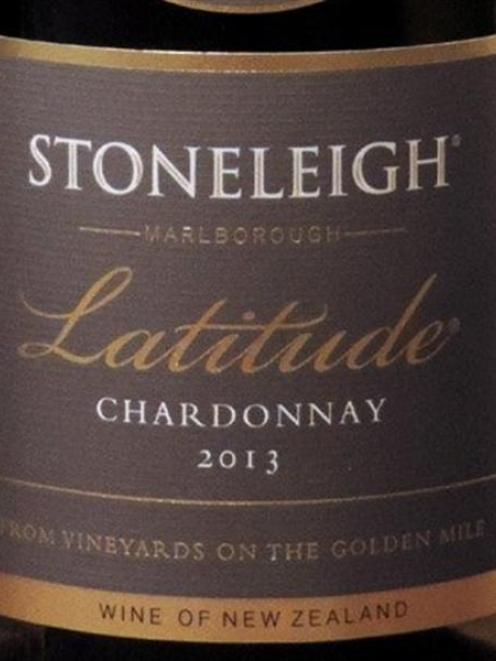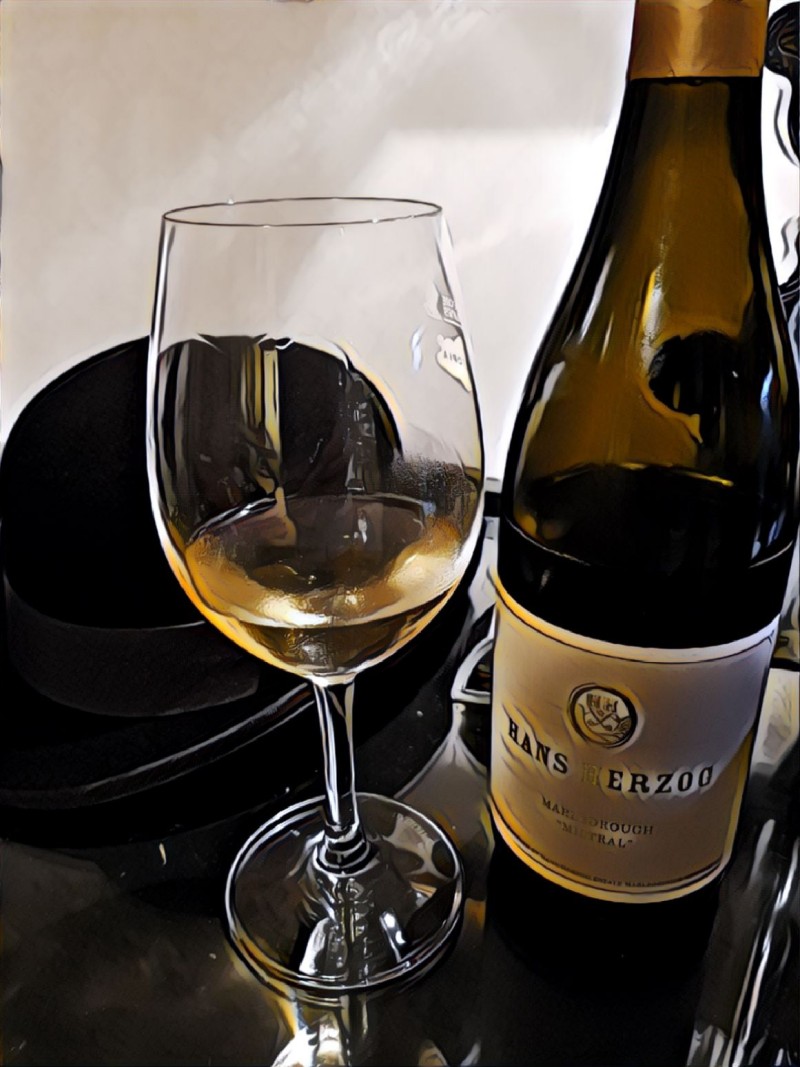
Some of the finest expressions of wine made from the Chardonnay grape emerge from the region of Burgundy in France. Once tried, they are wines that are hard to forget, if you are the type who refutes the idea of “A B C“, and fully embraces what I believe is the Queen of Wines.
When joining a fine wine society that maintains a cellar, you do it expecting to encounter the finest of the world’s wines from time to time. This was one of those occasions.
RE produced a wonderful set of notes to accompany this tasting:
“Last year we tasted six White Burgundies from the 2011 vintage. It’s probably fair to say not all of these were to everyone’s taste – some tasters clearly had issues with reduction and acid, from a lean vintage that seems prone to those criticisms. Of course, others feel the 2011s are lovely, and anything with a pH greater than 3.2 is pretty flabby anyway…
The 2012s we are about to taste should be quite different. I expect them to show good ripeness, and more even acid. Of course, reduction is always part of White Burgundy and those sensitive to Sulphur compounds will no doubt find at least one of the wines “challenging”. It certainly promises to be interesting, yet again.
The region and vineyards
Burgundy sits pretty much a little to the East of central France. It’s quite a large geographic area, with Chablis sort of halfway between the Cote d’Or and Paris. One of our wines is from Chablis and we shall be unsurprised if it tastes a bit different from the others. The next “outlier” will be the Corton Charlemagne, being in the Cote de Beaune but 20 odd minutes by car from Puligny, the Southernmost of the villages we are tasting from. For me, the real magic of the region is right there – Puligny and its neighbours Meursault and Chassagne, where the world’s greatest Chardonnays are made. It’s fascinating how wines grown in such close proximity display quite distinct characteristics.
Pucelles is just north of the Grand Cru vineyards Batard Montrachet and Bienvenue Batard Montrachet. It’s generally considered one of the “best” 1er Crus, but then so are several other ones. Pucelles sits at the bottom of the Cote d’Or slope, where the incline is less pronounced than higher up the hill. Henri Boillot owns 57 ares of vines that are around 50 years old.
Champ Canet is on the northern border of Puligny, next to Meursault. It’s located mid-slope and just above Combettes and on the same sort of line as Perrieres. Geographically, one of the best sites, and Sauzet has some of the oldest vines here (going back to 1939 plantings).
Genevrieres in Meursault is right in the heart of the 1ers there, south of the village. The name of this appellation comes from the juniper trees that used to grow there a long time ago. It is sometimes said that the taste of the flowers of this tree used to be felt in the wine. It is also said, just sometimes, that this is complete nonsense. Latour-Giraud is definitely a strong performer in the village and with Genevrieres in particular. The Domaine’s own website description is too good to pass up:
“The history of Field LATOUR-GIRAUD extends over three centuries and goes up at the end of XVII. The known ancestor oldest is Jean Latour-Boillot born about 1680. At that time the vine was already the principal wages. The presence of the Latour family on the vineyard appears during the French revolution by the person of Jean Latour-Mouquin, born in 1748 and grandson of Jean Latour-Boillot”
Charmes is also in the south of Meursault, right next to Combettes and Referts in Puligny. Charmes is located on a gentle slope at the bottom of the Cote d’Or escarpment, and is not as steep as some of the vineyards on the hill above (e.g. Perrieres). Roulot is one of the “superstar” producers nowadays and wine-searcher provides you with plenty of opportunity to spend over $700 on this wine.
Corton Charlemagne, further north, is on the hill of Corton, a large outcrop of limestone set slightly apart from the main Côte d’Or escarpment. Emperor Charlemagne is said to have ordered the planting of the first white grape varieties on the Corton hillside. The red wines he loved so much stained his long white beard, and one of his several wives is said to have pressured him into drinking white wines instead… Whether true or not, we all appreciate having white Corton Charlemagne. The Henri Boillot wine is from their Maison business.
Preuses in Chablis lies at the northern end of the Grand Cru slope, where Kimmeridgian soils and a sunny aspect make for an excellent terroir. It crowns, or is sandwiched between, Bougros and Vaudesir. It’s actually yet another vineyard that – in a fit of originality – is pretty much called “Perrieres” (old French term for quarry) because apparently Preuses is simply what the original “Pierreuse” corrupted to in this instance. I couldn’t easily find how many vines and how old they are in this instance, but Billaud Simon has been around for 200 years odd.
How was 2012 as a vintage?
2012 was another miserable vintage, with quantities low due to hail damage. A cold wet winter and Wellington-esque weather across April to June. Yet again saved by much better conditions thereafter, except the storms and hail of course. While “professional” opinions were or are somewhat split, my view is that the wines are rather lovely. Good ripe fruit and enough structure to keep things interesting. Of course, as is always the case with Burgundy, producer matters an awful lot, and we are fortunate to be tasting wines from some of the best.
Decanter is probably low-balling in its assessment – 3½ / 5 for Cote d’Or Whites and a more generous 4 / 5 for Chablis: “Drink soon. Hailstorms slashed quantities on the Côte de Beaune, and Chardonnay was badly affected. Yet after a turbulent summer, the grapes were picked in healthy condition, although quantities were, in some places, risible. But there is no stylistic signature to the vintage, and there are skinny whites and fat ones, making generalisations all but impossible.”
Vinous (Tanzer) goes into good detail with a dollar each way and avoiding generalisations while making generalisations: “In fact, 2012 has turned out to be a very good vintage for the white wines of the Cote de Beaune, yielding many flamboyantly rich, concentrated, sexy examples (I will taste the reds in depth later this fall). It’s also an uneven vintage because, as is often the case, weather conditions on the Cote de Beaune were even more extreme than those on the Cote de Nuits. So although there will be many outstanding wines in 2012, buying the vintage will require selectivity. And prices will be high, owing to the very short crop.
… My early look at hundreds of wines suggests that the 2012s are generally very rich, generous, full-bodied wines with a lot of dry extract, very much reflective of tiny yields and small grapes. While some growers consider their 2012s to be classic white Burgundies, others find the wines to be over-concentrated. As I have written in these pages through the years, some of Burgundy’s most intelligent white wine producers are convinced that chardonnays made from tiny yields will never be the most elegant style: they will always have some sort of imbalance reflecting the extremes of their growing season.
Indeed, I found a number of 2012s to be too powerful to be considered classic, often with a tendency toward heaviness. These wines are robust but not austere; with their major levels of baby fat, they still need to be refined during their last months in barrel or tank, and may well benefit from a fining before bottling. Some growers believe that the wines have good inherent minerality but that it’s currently blocked by the wines’ fat. They expect their wines to gain tension in the months leading up to the bottling.
Many 2012 white Burgundies are thick and rich in the way of some of the expensive boutique chardonnays from California. Finally, a white Burgundy vintage that will not be steamrolled by California wines in early blind tastings.
Happily, relative few wines show obvious signs of surmaturite, so the aromas of these wines can be quite fresh and complex. If anything the 2012s are weightier–more outsized–than the 2010s, but they rarely have the tactile, dusty minerality, the density of texture, or the bracing acidity and inner-mouth tension of the earlier vintage, which is looking more and more like a once-or-twice-a-generation vintage. But where the 2012s do have enough acidity, definition and grip, they are extremely impressive and should age very well. The combination of sheer richness of fruit and lively, harmonious acidity makes the best 2012s exceptional. These latter wines will probably outperform their older 2010 siblings for at least the next several years.”
Jancis Robinson appears positive on the vintage, saying: “Generalisations about burgundy are particularly dangerous but I’m prepared to go out on a limb and say that, while there are examples that are too soft, I found some of the whites extremely high in acidity and feel that the best may need a few years in bottle to round out while others may always be a bit skinny.”
My personal view is that the 2012s are yet another fine White Burgundy vintage. Since 1999, there have really only been a couple of weak vintages: 2003 and 2006, with many wines from the latter coming right. Modern approaches and technology have helped significantly – it’s quite possible that 20 years ago the weather conditions we saw in 2012 would have meant a flat out disaster.
What about premox?
Premature oxidation continues to be an issue for White Burgundies. At least, more producers now acknowledge the issue openly and are trying different things – e.g. closures. No doubt some of the wines tonight will show Sulphur compounds and it’s a shame we don’t have copper currency any more.
In Issue 73 of “A View from the Cellar”, John Gilman laments the issue at length, and says he has already seen “a fair bit of premox in 2012s”. His gut-feel is that it’s probably global warming and the horse has bolted – i.e. no matter what steps producers try to put in place, the good old days of White Burgundies peaking at 20 years old are gone. Of course, he then goes into contortions about why the drinking windows he provides in his tasting notes are framed as if premature oxidation didn’t exist.
So in essence, we don’t really know anything more about it than we did last year.
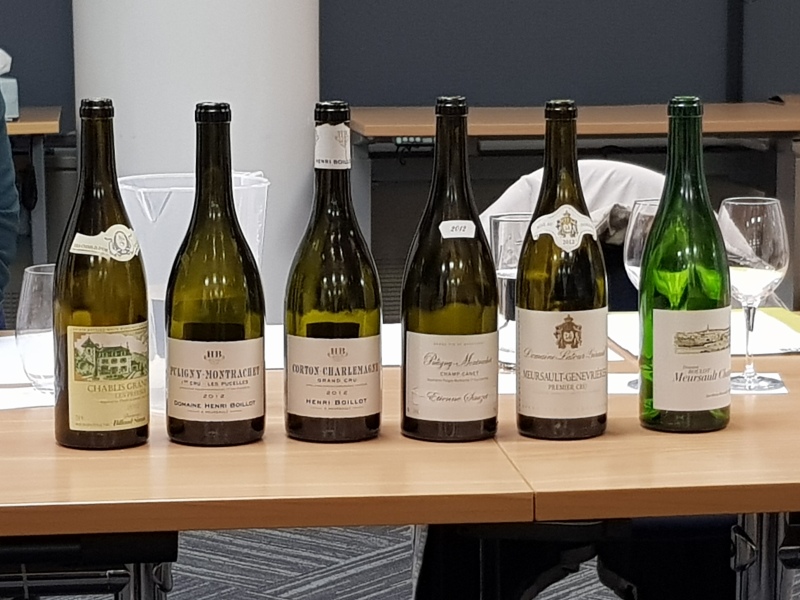
The wines we’re tasting tonight:
I have provided tasting notes and scores from a couple of critics for each of the wines tonight.
2012 Latour Giraud Meursault Genevrieres
“Bright, light yellow. Aromas of yellow peach, orange peel, acacia blossom and spices convey an impression of punch. Then dense and creamy but firm in the mouth, with ripe acidity and dusty extract leavening the wine’s ripeness and extending the ripe, sweet, refined finish. Very fresh and complete Genevrieres, and more complex than the Charmes.” (93, Stephen Tanzer)
“(from 40+ year old vines from a huge 2.5 ha parcel in Genevrières Dessus). Here too the nose is markedly reduced and tough to tease out the fruit composition though again it does seem ripe. The solidly dense middle weight flavours possess excellent intensity and plenty of minerality while retaining a lovely sense of refinement allied with a sophisticated mouth feel, all wrapped in a cool, linear and well-balanced finale. This restrained effort is an exercise in harmony and this too should amply reward 6 to 8 years of bottle age. Recommended. (90-93)/2019+. A Sweet Spot Wine!” (90-93 Burghound)
2012 Roulot Meursault Charmes
“From vines planted way back in 1942, the 2012 Meursault 1er Cru Charmes has a very harmonious, intense bouquet with citrus lemon, fennel, mint and orange zest that are all beautifully defined. The palate is vibrant and tense on the entry, a shard of orange peel that is really penetrating from start to finish. Extremely focused but quite flamboyant, this has everything you could ask for in a Meursault Charmes. This is simply fabulous even if it now does come with a hefty price tag. Drink 2016-2030” (95, Neal Martin, Wine Advocate)
“This isn’t quite as elegant but it is even more complex with its expressive nose of really lovely purity that features cool floral, pear and green apple aromas trimmed in just enough wood to notice. The super intense and restrained beautifully precise middle weight flavours brim with an underlying minerality that adds lift to the seductively textured finale that displays outstanding persistence. Despite all of the refinement this remains a powerful and concentrated wine that possesses almost painful intensity and this should age effortlessly for years to come.” (92-94, Burghound)
2012 Henri Boillot Puligny Montrachet Pucelles
“White orchard fruit and the hallmark honeysuckle scents give way to punchy and impressively concentrated medium-bodied flavors that possess a highly refined mouth feel if not the sheer depth of the Clos de la Mouchère. To be sure this is a lovely wine that could aptly be described as notably bigger and more powerful than is typical for Pucelles. Tasted: Jun 15, 2014. Drink: 2018+” (91, Burghound)
“Green-tinged medium yellow. Ripe stone fruits, pear, honey and hazelnut on the inviting nose and palate. Fat, rich and chewy; this extract-rich wine boasts terrific solidity and depth of fruit. Finishes with outstanding force and length. Has the palate presence of a grand cru. (Incidentally, there’s no Folatieres in 2012; Boillot only made his domain bottlings from Puligny-Montrachet.)” (92, Stephen Tanzer)
2012 Sauzet Puligny Montrachet Champ Canet
“A sexy note of reduction to the peach, hazelnut and nutmeg aromas. Rich, dense and deep, showing youthfully subdued white peach and mineral flavors. Finishes very long, very dry and broad, in need of time in bottle to reveal more personality. From a crop level of just 21 hectoliters per hectare due to hail, according to Boudot, who noted that he declassified his tiny, hailed-on Hameau de Blagny production into his Puligny villages in 2012.” (92+, Stephen Tanzer)
“**Note: from a full 1 ha parcel of 40+ year old vines though some of them were planted in 1938 at the same time as the Bienvenues; aged in approximately 1/3 new oak with a slightly longer élevage than the prior wines**
Here the beautifully layered nose is openly exotic with spicy aromas of mango, apricot, peach and mandarin orange. The medium weight plus flavors are more concentrated still with a sleek muscularity that contributes to the unctuous but not heavy mouth feel, all wrapped in an extract-rich, suave and beautifully balanced finish. While not nearly as mineral-inflected as the prior two wines there is simply more underlying material and ultimately this should be the better wine and certainly its track record would lend credence to that prediction.” (92, Burghound)
2012 Henri Boillot Corton Charlemagne
“*Don’t miss!* This is aromatically restrained to the point of being almost mute and only grudgingly displays notes of citrus peel, green apple, white flowers and wet stone. There is excellent verve and intensity to the detailed and mineral-inflected broad-shouldered flavors that culminate in a focused, complex and powerfully long finish that is markedly austere and saline. This superbly long effort will need plenty of time to unwind as it’s presently very, very tight but it should handsomely repay extended cellaring.” (94, Burghound)
“Pure aromas of lime, linden blossom, crushed stone and spearmint. Plush and fine-grained but also quite penetrating, offering lovely lift to the concentrated lemon, lime and stone flavors. Very young but already quite suave, this round, rich wine finishes very long, with a youthful metallic minerality. Boillot told me that this was his only Chardonnay parcel untouched by hail in 2012–and the only one affected by hail in 2013.” (94, Stephen Tanzer)
2012 Billaud Simon Chablis Preuses
“This is restrained to the point that aggressive swirling is required to coax even a glimpse of the otherwise very fresh aromas of floral, iodine, tidal pool and soft pear scents. There is superb intensity to the subtly layered medium weight flavors that exhibit an undercurrent of minerality before culminating in a dry and mouth coating but not really austere finish that goes on and on…” (93, Burghound)
“The 2012 Chablis Grand Cru Les Preuses does not quite have the penetration or delineation of the Vaudesir on the nose and I would have preferred more spiciness to come through. The palate is clean and precise on the citric entry, laced with orange peel and saline notes, although again, it needs to develop more personality and spiciness on the conservative finish. Drink 2016-2025.” (89, Neal Martin, Wine Advocate)”
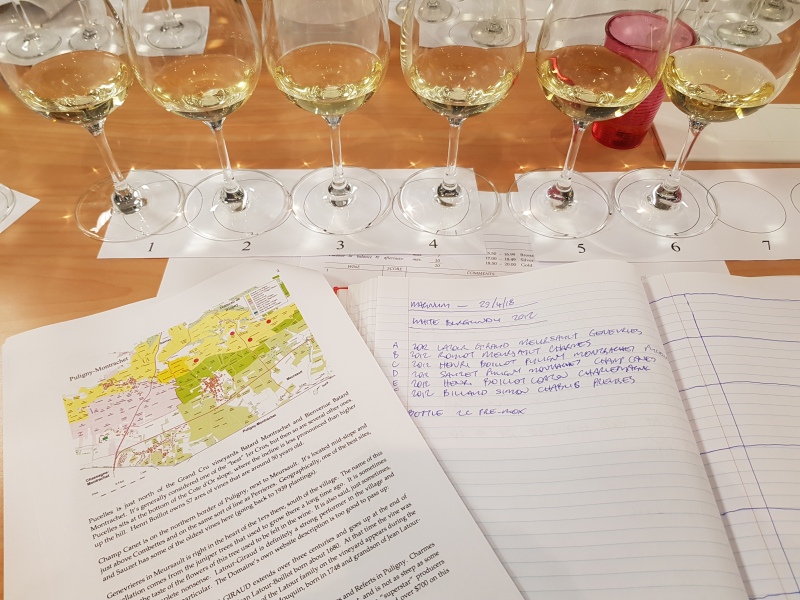
And so we came, and poured, and here are my thoughts on the wines:
2012 Latour Giraud Meursault Genevrieres – Brilliant pale gold. This had me at hello. Upfront bold and rich hit. Sulphur/reduction, golden stonefruit, peach and mandarin aromas. Essence of Meursault. Sweet attack in mouth. Bold rich body of fruit, with freshness and balanced acid. A “joined-up”wine. Apple-pip finish. Shows maturity. Gold. My third wine.
2012 Roulot Meursault Charmes – Brilliant pale gold. Wow. Fine and floral, lovely and elegant. Shows such good aromatic intensity. A hint of reduction (I like). Gorgeous fruit weight flavour and silky mouthfeel. Balanced with glorious ripeness and acid. Harmoniou s and long. Gold. My Wine of the Night (WOTN)
2012 Henri Boillot Puligny Montrachet Pucelles – Brilliant gold. Rich and golden, with gorgeous golden fruit aromas, and spice and oak, warmth, sweetness, and slightly reductive. Crisp ripe fruit on palate, balanced, effortless. It had rewarding body, crunchiness, oily-ness, balanced in weight and acid, but showed a thrillingly lively citrus character. Nutmeg. Power and reticence for some, overthinking it. Gold. My second wine.
2012 Sauzet Puligny Montrachet Champ Canet – Brilliant pale gold. Fine, bold, flinty – Seashells? Slight unripe peach character. Complex and layered (I can’t write that without thinking of Shrek and his “layers” J) melon, sweetness, lanolin. Light golden peach flavours, slightly unripe compared to others in this flight. Shows some honey, and gorgous weight with food. Who knows huh? Apple pip on the back, again. A ‘struck match’ character for some. Tension and power without artifice Gold.
2012 Henri Boillot Corton Charlemagne– Brilliant pale gold. Fresh crisp aromas, dewy apple, spicy and oaky, deepens on standing. Solid. To taste: fresh, with body. Sweetness and apples. Crunchy mouthfeel. Oaky and hot on the back palate. Simple? But not. Silver.
2012 Billaud Simon Chablis Preuses – Brilliant light pale gold. Refined and elegant white peach florals with a hint of honey on the nose. Lively attack, clean entry, crisp green flavours of apple, restrained, somewhat short, dry. Delicious. A nice wine. Gold
It was remarkable how the aromas differed across the flight, exhibiting true variations in winemaking approach, terroir and grape clonal variety. Bottle 2c showed Pre-Mox (lean fruit, dying, faulty) which we all sampled to fix in our sense memory what this condition shows as.
The tasting result reminded me of that old football gag, “Football is a simple game played for 90 minutes[ ] , and at the end, Germany wins”.
In this case, for Chardonnay, for me, Meursault wins again!
Thanks to MS and ER for the tasting and guidance.
